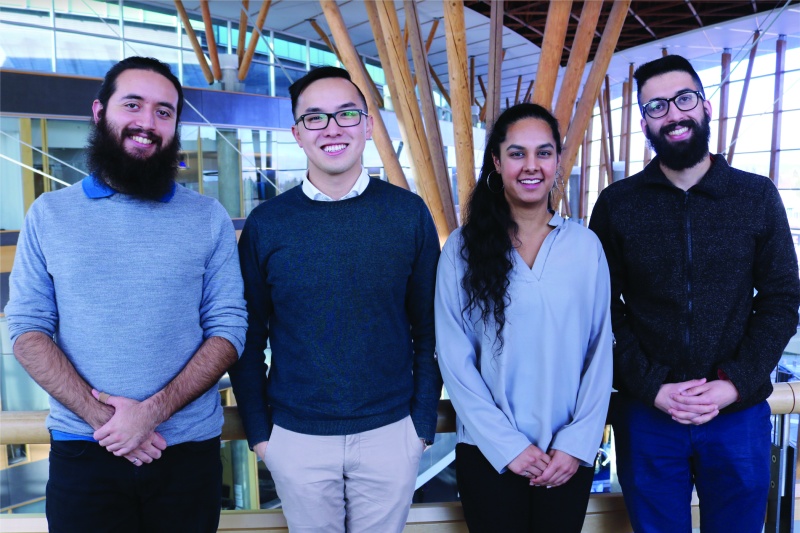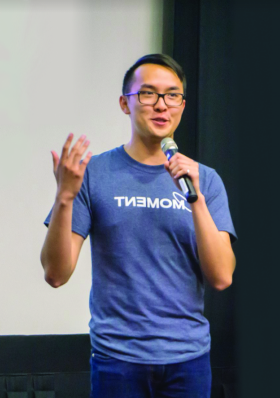When thinking about ecosystems, it can sometimes be easy to forget about the “systems” part. Plants, animals and humans are all connected, starting with soil. Soil health should be everyone’s first priority when it comes to agriculture. Luckily, there’s a movement that’s aiming to ensure that happens.
Ecosystem Services Market Consortium is a non-profit that’s working to improve soil health across the US. We spoke with Thayer Tomlinson, Communications Director, about Ecosystem Services Market Consortium (ESMC), including why they started, their upcoming projects, and how you can get involved.
Tell us about Ecosystem Services Market Consortium’s mission.
The Ecosystem Services Market Consortium’s mission is to advance ecosystem service markets that incentivize farmers and ranchers to improve soil health systems, which benefits society. More specifically, we are creating a program that pays agricultural producers for the measurable climate and water benefits resulting from practice changes in their agricultural operations.
What inspired your founders to start Ecosystem Services Market Consortium?
ESMC was officially formed in 2019 after two years of multi-stakeholder discussions on how to best create carbon markets tailored to agriculture, and their ability to scale beneficial soil health outcomes. Our work is driven by the potential we see in agriculture’s ability to improve soil health and combat climate change. Our approach creates a win-win-win for farmers and ranchers, consumers, and the environment.
While we do not believe ecosystem services markets are a “silver bullet” climate solution, we do believe our market program can complement other global efforts and provide near-term opportunities to reduce greenhouse emissions at the lowest possible cost, while other, more costly tools and technologies are brought online.
What were some of the challenges they encountered?
Building a market program that encompasses multiple crop types, production systems, and regions in the US is not easy. Ensuring that ESMC’s market program has the highest level of scientific rigor is even harder. Making our work even more complex is creating an ecosystem services market that includes credits for reduced greenhouse gases, soil carbon sequestration, improved water quality and quantity, and increased biodiversity.
Many of the tools, technologies, and program design aspects for our program have had to be built while we are building our program. While this process has allowed us to create new types of credits for carbon markets as a whole, it also takes a lot of time, effort, thought, and financial support.
What do you consider Ecosystem Services Market Consortium’s biggest success?
To tackle the challenges of building this market, our wide and diverse membership is one of our greatest resources. Our 80+ membership represents the entire spectrum of the agricultural value chain, including agricultural producer groups and co-ops, major corporate food and beverage companies, agribusiness, conservation NGOs, agtech companies, land grant universities, and others. With our members, we are collectively investing in ESMC’s market program.
An example of this collaboration is our pilot projects around the country, which use nationwide member organizations and producers as pilot partners. Through our pilots, we work with an extensive network of partners and collaborators to test and refine our market program and other new technologies for every major farm commodity across the nation. These pilots are key to our success – the dedication and time our partners have put into the pilots is a full measure of our success to date.
What makes your organization unique?
Carbon market programs for agriculture are becoming more common, and farmers have lots of questions about why they should work with one program over another. ESMC is unique in that our organization is a not-for-profit organization operating a market program, while many of the other carbon market programs are for-profit organizations.
We’ve created a member-led consortium that can maximize environmental impact and producer income by delivering as much of the value back to farmers and ranchers as possible. Producers who work with us have the flexibility to choose among the practices that can generate credits, so producers can manage their operations to work best for them.
Additionally, our program pays producers for a suite of quantifiable impacts: carbon credits and water quality, water use conservation, and habitat and biodiversity enhancement and protection. So instead of focusing on just one type of environmental improvement, we “stack” multiple ecosystem services to go beyond simply improving soil carbon and reducing greenhouse gases. This approach to generating multiple environmental credits from the same land improves our producers’ return on investment per acre.
How do you feel Ecosystem Services Market Consortium makes the world better?
Ecosystem markets represent one of humanity’s best chances to mitigate the worst consequences of climate change. Our ecosystem market program rewards agricultural producers for measured environmental impacts based on practice changes. But these benefits to farmers and ranchers don’t stop with our payments.
Regenerative and sustainable agricultural practices that increase soil organic carbon and reduce greenhouse gases have beneficial climate impacts, but they also improve overall soil health, structure, fertility, and productivity. This can create more resilient production systems that are less impacted by extreme weather.
Better soil health, in turn, means reduced soil erosion from wind and water, keeping valuable soil in the field. Improved soil water holding capacity can reduce nutrient losses and lower irrigation requirements. Improved practices can also positively impact biodiversity and habitat.
Tell us about your organization’s goals.
While ESMC has many goals, one key goal is to enable the success of the agricultural value chain to enroll tens of millions of acres in our market program. This work will help reduce the agricultural sector’s supply chain emissions to align with public commitments and science-based targets.
Are there any upcoming initiatives or projects you’d like to share?
Starting soon, our program will be operating in all 12 US agricultural regions, allowing producers across the country to enroll with ESMC and begin generating saleable ecosystem service credits. In May 2022, our market program will launch, which allows those producers currently enrolled in ESMC pilot projects to participate in our full market program.
As the market continues to scale and demand for ecosystem services increases, the value/price of credits will continue to rise, further incentivizing producers to adopt more regenerative practices, which will produce additional beneficial environmental outcomes and provide additional revenue to producers.
What do you most want people to know about Ecosystem Services Market Consortium?
As we expand our market program, it is important for the producers who create credits, the buyers of those credits, and the wider public to understand how much science and verification underpins these credits. We base our work on science, widely accepted standards, and outcomes.
Our market protocols have the strongest possible scientific basis to provide confidence and trust to sellers and buyers, as well as the public. Our protocols, projects, and ecosystem service assets are verified and certified by global certification bodies, Gold Standard and SustainCERT, so buyers of our credits have confidence that their investment is truly having an impact.
How can people help or contribute to Ecosystem Services Market Consortium’s mission?
One way people can help ESMC’s mission is to learn more about where their food comes from and how it is produced. Farmers, ranchers, and the agricultural sector can play a key role in reducing greenhouse gas emissions and increasing soil carbon, and be part of the solution to climate change. Supporting agricultural producers as they transition to more regenerative practices is part of that solution.
This story was featured in the Make The World Better magazine:
Dive into another inspiring story:
- Bluebird Grain Farms: Cultivating for the Next Generation
- Canadian Organic Growers: Advocating for an Organic Future
- Cascadia Seaweed: Making a Splash to Make the World Better
- EMKAO Foods: Transforming the Economy with Every Cocoa Bean
- Moment Energy: Harnessing the Power of Clean Energy Storage
- Nada Grocery: Going Package-Free to Save the Planet
- ReFeed Canada: Securing Sustainable Food Systems
- Solaires: Illuminating Good with Affordable Solar Solutions






